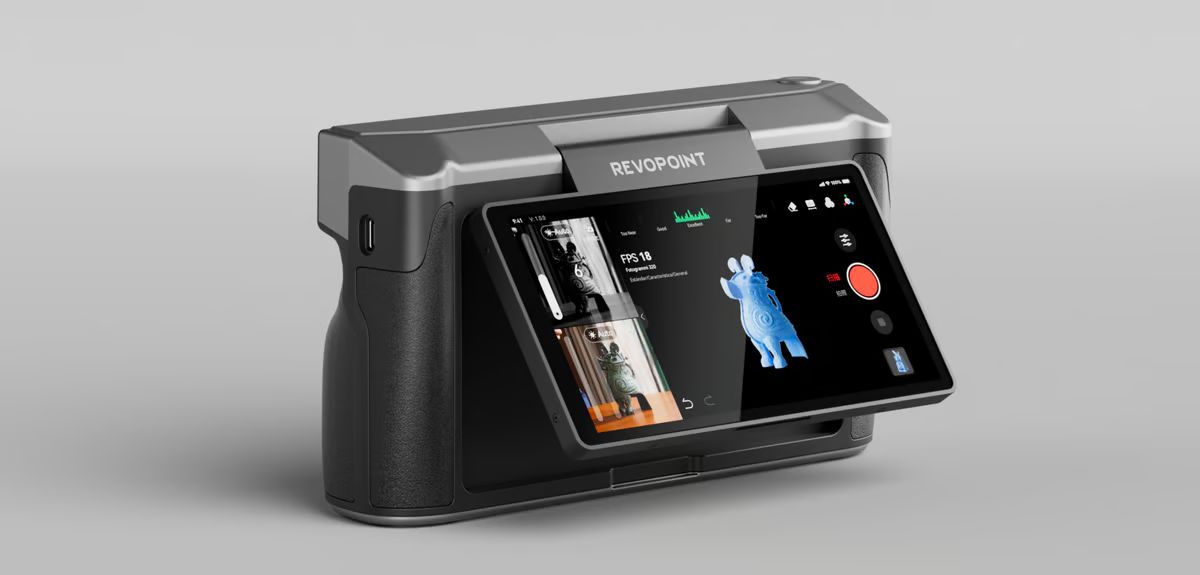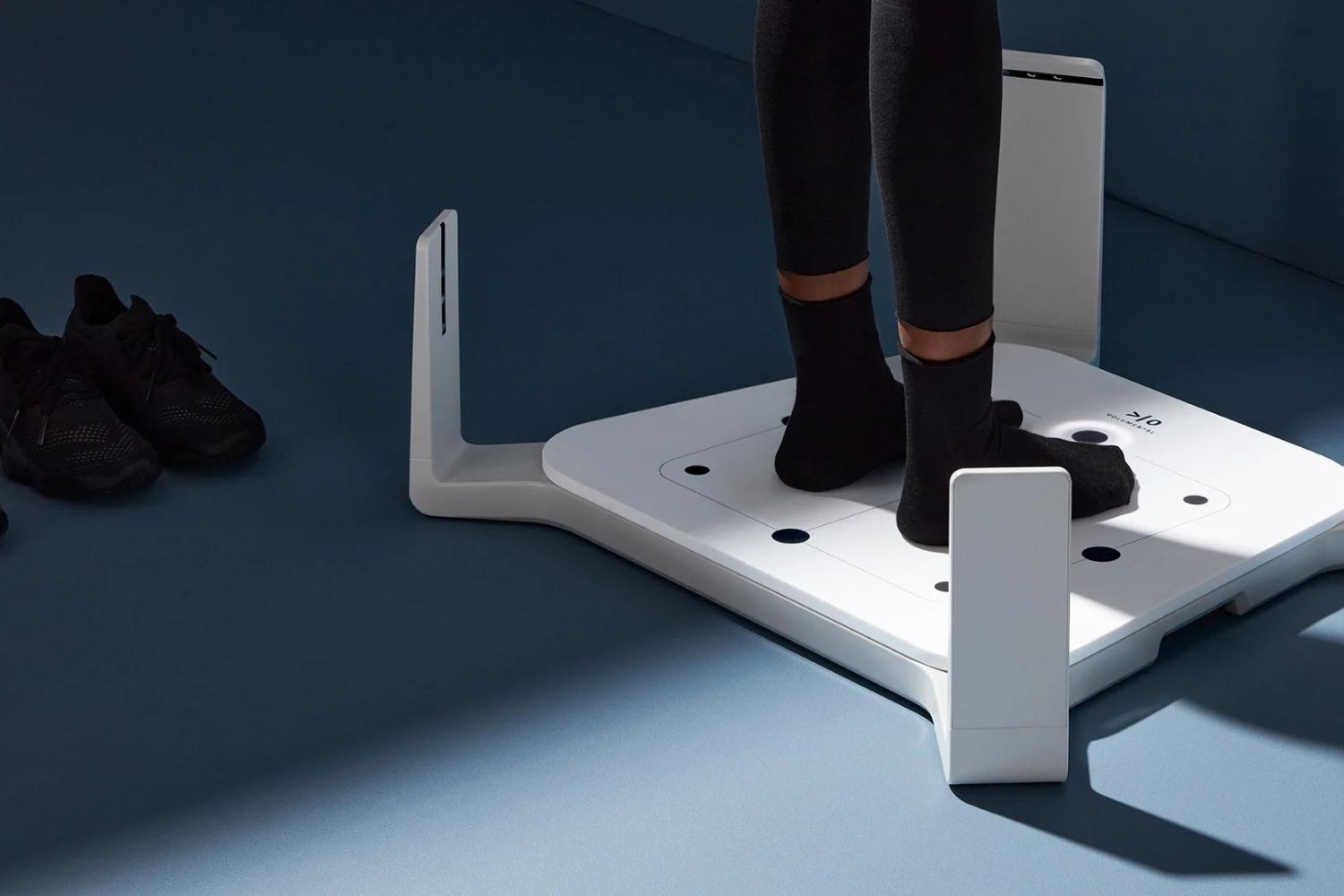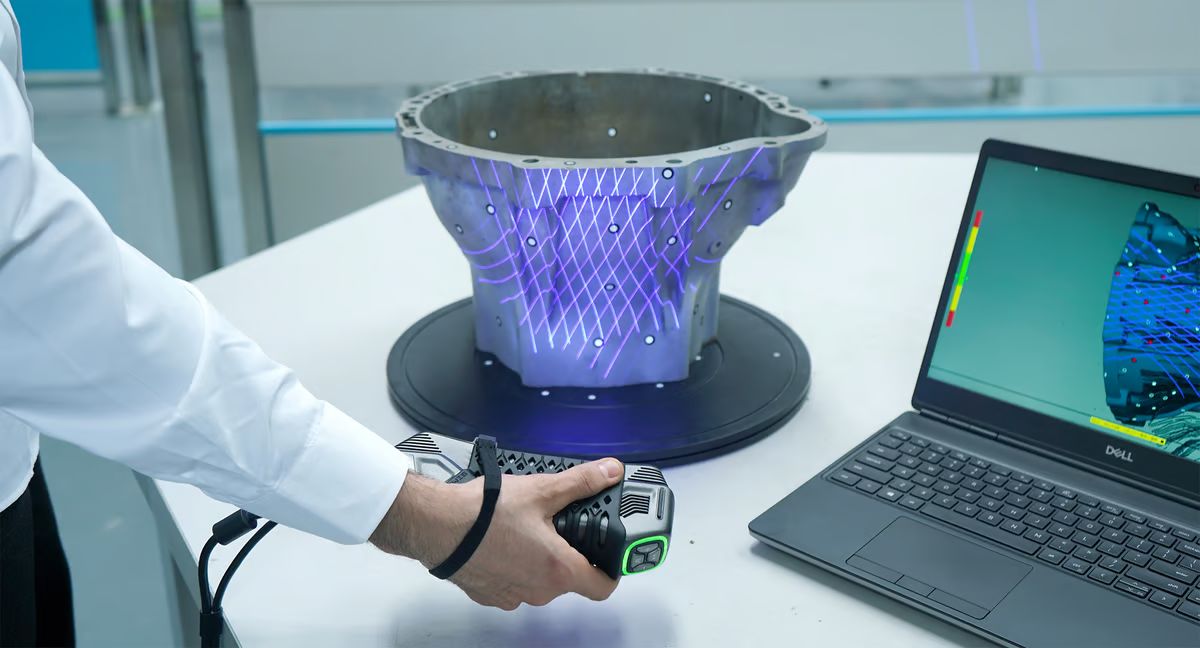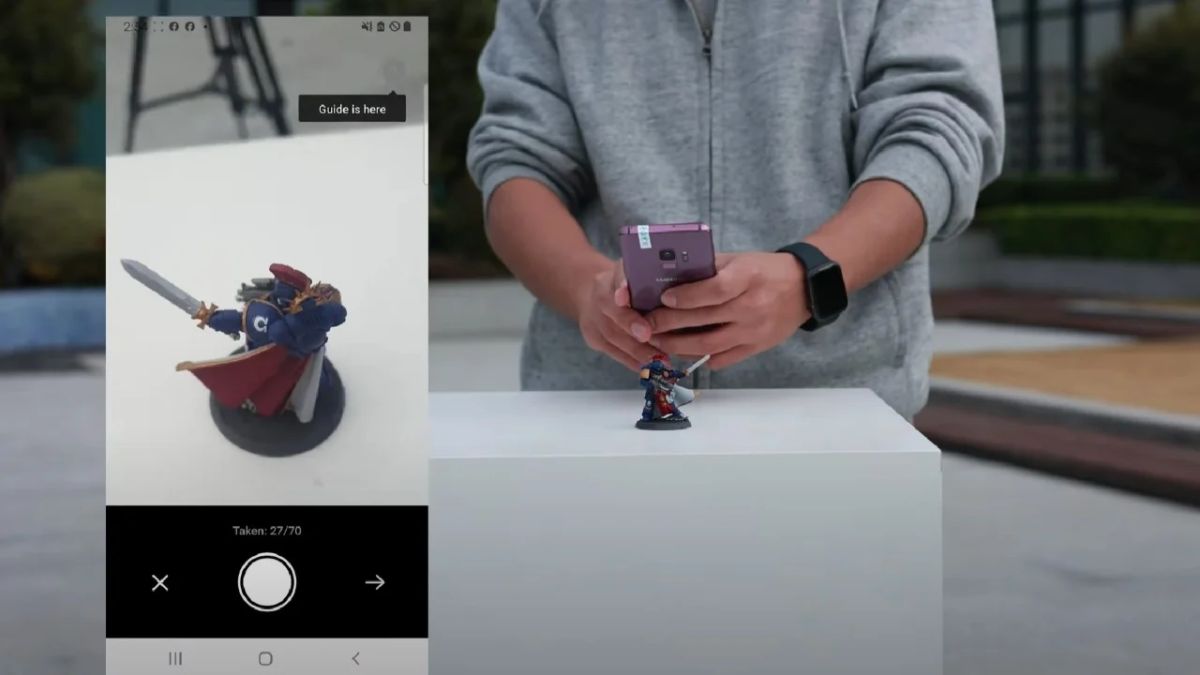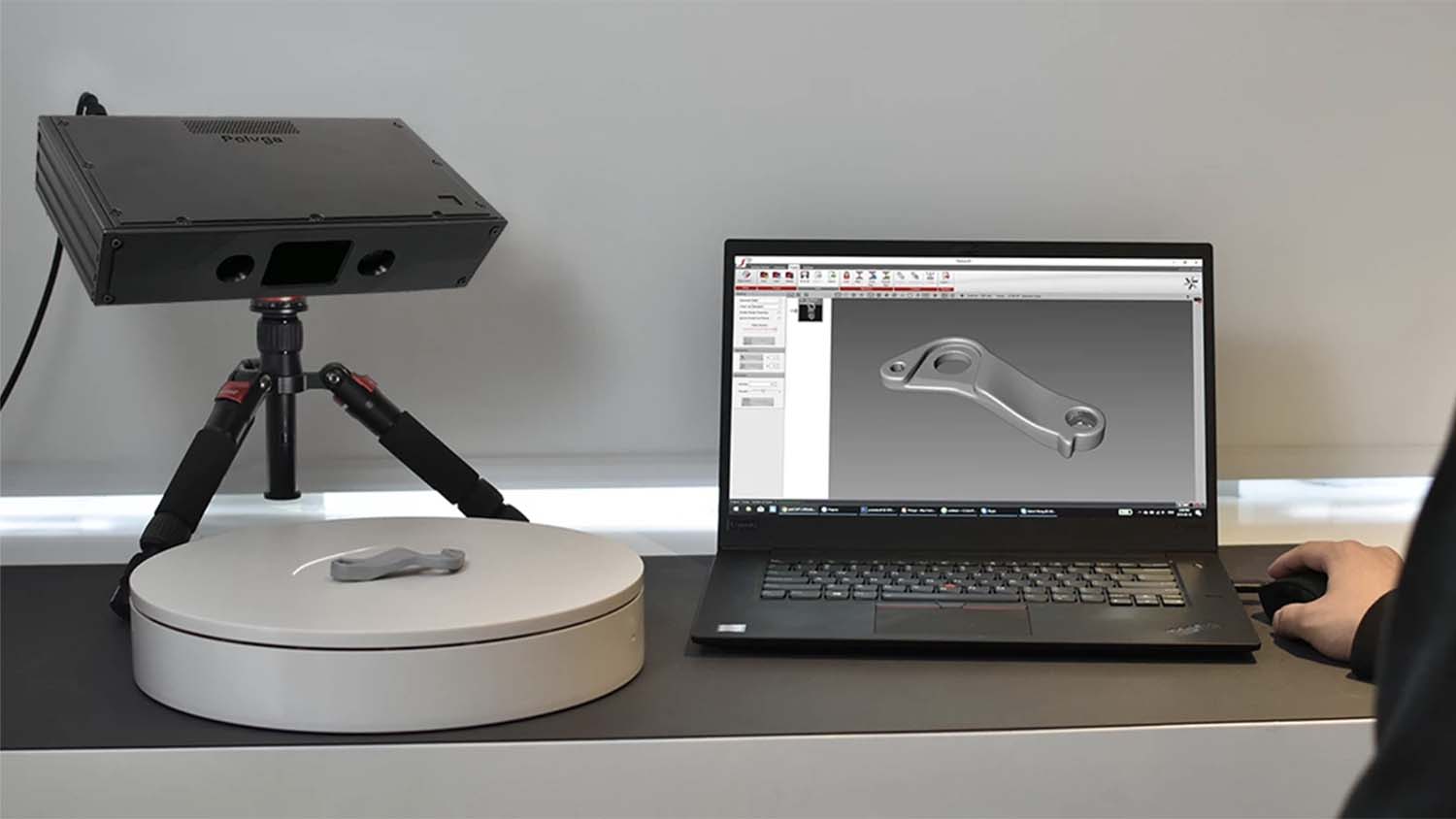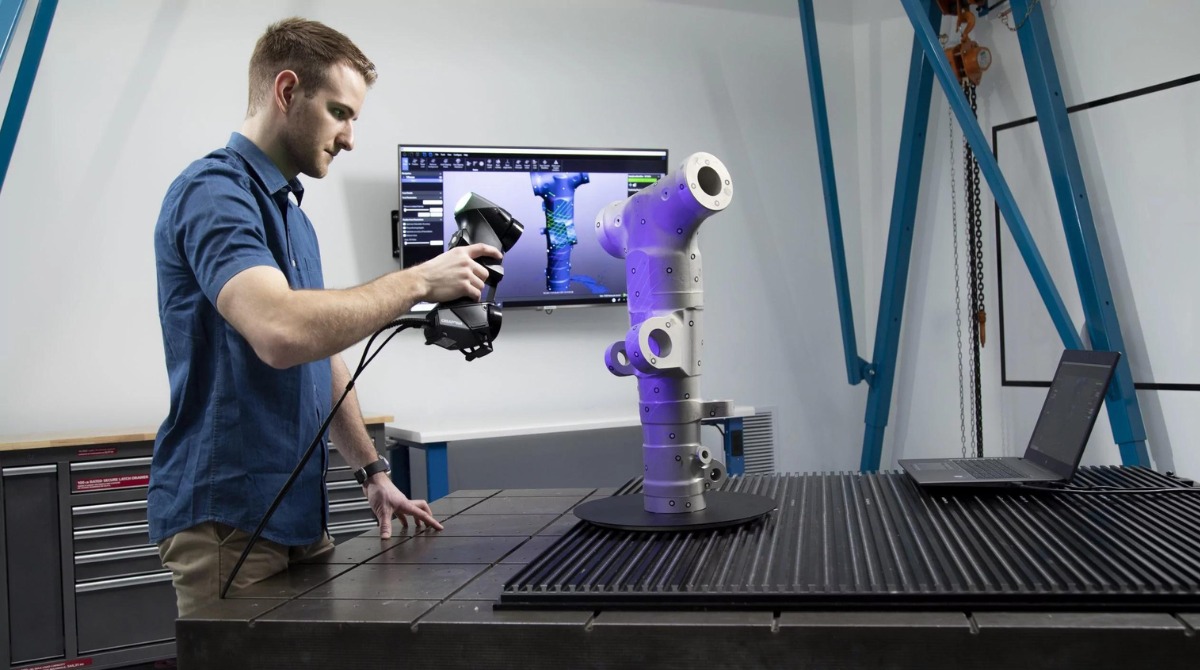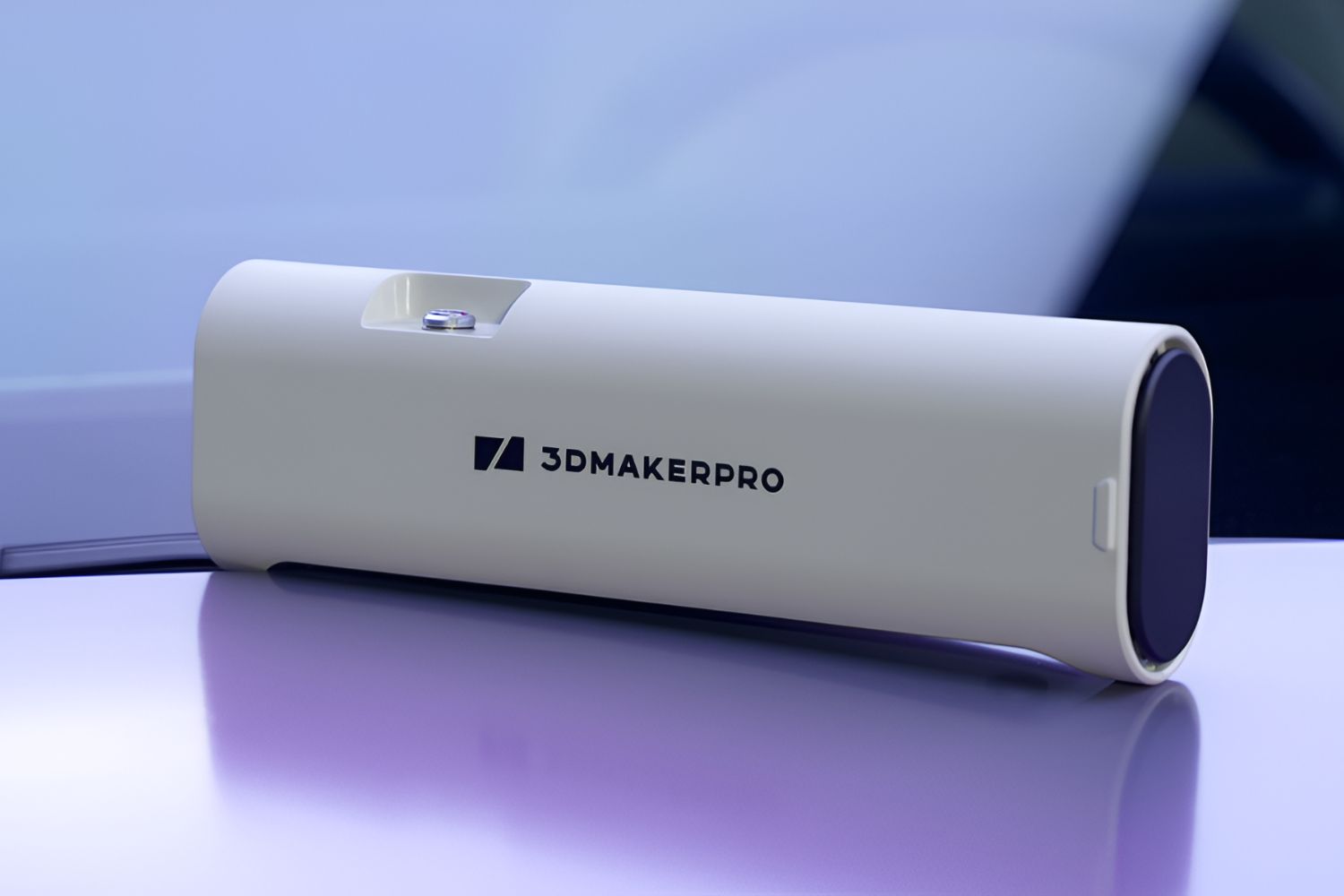Introduction
A Fit 3D scanner is an innovative technology that allows individuals to accurately measure their body shape and size. It addresses the need for precise measurements in various applications such as fitness, fashion, healthcare, and custom clothing. By utilizing advanced scanning and analyzing techniques, Fit 3D scanners provide detailed data and models of the human body, offering valuable insights for body measurements, fitness tracking, and virtual Try-on experiences.
With the rising demand for personalized and tailored products, Fit 3D scanners have become an essential tool in industries where accurate body measurements are required. This technology has revolutionized the way we understand our bodies and has paved the way for advancements in areas such as online shopping, virtual fashion experiences, and body shape analysis for health and wellness purposes.
In this article, we will delve into the workings of a Fit 3D scanner, exploring its step-by-step process of capturing and analyzing body scans. We will also highlight the benefits of using Fit 3D scanners and discuss the various applications where this technology has made a significant impact.
What is a Fit 3D Scanner?
A Fit 3D scanner is a specialized device that uses cutting-edge technology to create three-dimensional models of the human body. It utilizes a combination of hardware and software to capture accurate body measurements and generate virtual representations of individuals. These scanners have revolutionized the way body measurements are taken, offering a more precise and efficient alternative to traditional measuring methods.
Fit 3D scanners typically consist of a booth or a setup that individuals can step into or stand in front of. The scanner employs various scanning techniques, such as depth sensors and cameras, to capture a detailed image of the body from multiple angles. These scans are then processed by advanced software algorithms to create a three-dimensional model of the individual’s body.
The generated 3D models offer a wealth of information, including body circumference, height, volume, and even body composition. Fit 3D scanners use highly accurate measurements to ensure that the models accurately represent the individual. These precise measurements make Fit 3D scanners ideal for applications like fitness tracking, custom clothing, and virtual Try-on experiences.
It is important to note that Fit 3D scanners are non-invasive, safe, and user-friendly. Individuals simply need to follow the instructions provided and stand still while the scanner captures their body data. The process is quick, typically taking only a few minutes to complete.
Fit 3D scanners have become increasingly popular in recent years, with many industries embracing this technology to enhance their products and services. From fitness clubs and personal trainers to fashion designers and healthcare professionals, Fit 3D scanners have transformed the way body measurements are obtained and analyzed, offering a new level of accuracy and convenience.
How Does a Fit 3D Scanner Work?
Fit 3D scanners utilize a series of steps to accurately capture body measurements and generate 3D models. Let’s take a closer look at the process involved:
- Step 1: Getting Started: The individual stands in front of or steps into the Fit 3D scanner setup. The scanner may provide instructions for proper positioning, ensuring that the individual’s body is aligned correctly for accurate measurements.
- Step 2: Capturing the Body Scan: The Fit 3D scanner employs various scanning techniques, such as depth sensors and cameras, to capture a detailed image of the individual’s body from multiple angles. These scans collect data points that represent the contours and shape of the body.
- Step 3: Analyzing the Data: The captured scans are then processed by advanced software algorithms. These algorithms analyze the data points and convert them into a cohesive 3D model. The software removes any imperfections or errors to ensure the accuracy of the final model.
- Step 4: Generating the 3D Model: Using the analyzed data, the Fit 3D scanner generates a visually detailed and precise 3D model of the individual’s body. The model includes measurements such as body circumference, height, volume, and other customizable parameters depending on the specific scanner and software used.
- Step 5: Body Measurements and Analysis: Fit 3D scanners provide detailed body measurements based on the generated 3D model. Users can access these measurements to track their fitness progress, monitor changes in their body shape, or obtain accurate measurements for custom clothing and alterations.
The entire process of scanning and generating a 3D model typically takes only a few minutes. The result is a digital representation of the individual’s body that can be utilized in various applications for personalized products and services.
It is important to note that Fit 3D scanners are designed to prioritize accuracy, ensuring that the generated models reflect the precise body measurements of the individual. This level of accuracy enables industries such as fitness, fashion, healthcare, and virtual Try-on experiences to provide customized and tailored experiences based on the user’s unique body shape and size.
Step 1: Getting Started
The first step in using a Fit 3D scanner is getting started with the setup. Depending on the specific scanner and device, this may involve stepping into a designated booth or standing in front of the scanner. The process usually begins with a quick registration or login to the scanner’s software platform.
Once registered, the individual may be prompted to follow specific instructions for correct positioning. This is important to ensure that the body is aligned properly and that the scanner can capture accurate measurements. The scanner may provide visual cues or guidelines to assist with correct placement of the feet, hands, or head.
During this step, it is crucial to remain still as any movement can affect the accuracy of the scan. Some scanners may also provide instructions for suitable attire, such as tight-fitting clothing or minimal accessories, to ensure the best scanning results.
Fit 3D scanners are designed to be user-friendly, and the instructions provided to individuals are usually simple and easy to follow. The goal of this step is to make sure that the scanning process starts on the right track, laying the foundation for accurate body measurements and 3D model generation.
It is important to note that Fit 3D scanners prioritize user privacy and data security. The registration process may involve providing consent for data collection and usage, as well as the option to delete or anonymize personal information if desired.
Overall, this initial step prepares individuals for the scanning process, ensuring that they are in the correct position and ready for the Fit 3D scanner to capture their body measurements accurately. Following the provided instructions and remaining still during this stage will help in producing a high-quality scan and a reliable 3D model for subsequent analysis and measurements.
Step 2: Capturing the Body Scan
After getting started with the Fit 3D scanner setup, the next step is capturing the body scan. This is where the scanner utilizes advanced scanning techniques to gather detailed information about the individual’s body shape and size.
The Fit 3D scanner employs various technologies, such as depth sensors and cameras, to capture multiple scans of the individual from different angles. These scans collect data points that represent the contours and dimensions of the body. The scanner may use structured light or infrared sensors to measure the distance between the body and the scanner, allowing for precise capture of body shape and proportions.
During the scanning process, it is important for the individual to remain still. This ensures that accurate measurements are obtained and that the resulting 3D model is an accurate representation of their body. Some scanners may have prompts or indicators to guide the individual on where to look or how to position their body to ensure optimal scan quality.
The scanning process is generally quick and non-invasive, taking only a few minutes to complete. The scanner calculates and captures thousands of data points during this time, building a detailed digital representation of the individual’s body.
Fit 3D scanners are designed to capture a complete view of the individual’s body, including front, back, and side profiles. This comprehensive approach ensures that all angles and dimensions are captured, providing a more accurate representation of the individual’s body shape.
It is worth noting that Fit 3D scanners prioritize user comfort and privacy. The scanning process is generally safe and does not require any physical contact with the scanner. Furthermore, the data captured during the scan is typically encrypted and securely stored to protect the individual’s privacy and personal information.
By accurately capturing the body scan, Fit 3D scanners lay the foundation for generating a detailed 3D model of the individual’s body. The information captured during this step forms the basis for accurate body measurements and subsequent analysis.
Step 3: Analyzing the Data
Once the body scan is complete, the next step in the Fit 3D scanning process is analyzing the data that has been captured. This step involves sophisticated software algorithms that process the collected data points and convert them into a cohesive 3D model of the individual’s body.
The software carefully analyzes each data point, ensuring accuracy and removing any imperfections or errors that may have occurred during the scanning process. This is crucial to ensure that the resulting 3D model is a faithful representation of the individual’s body shape and size.
The algorithms used in this step take into account various factors, such as body contours, proportions, and spatial relationships between different body parts. This meticulous analysis results in a highly detailed and visually accurate 3D model.
Fit 3D scanning software may also provide additional functionalities, such as the ability to customize the 3D model based on specific requirements or preferences. For example, users may have the option to adjust the level of detail, smoothness of the model, or even add virtual clothing to visualize how different garments would fit.
During the data analysis process, the software may also calculate various body measurements based on the captured data. These measurements can include body circumference, height, volume, and other relevant metrics. Fit 3D scanners prioritize precision, ensuring that the measurements provided are highly accurate and reliable.
It is important to note that the analysis of the data points occurs rapidly, typically in a matter of seconds. The efficient processing of the information allows for real-time feedback, providing immediate results to the individual using the Fit 3D scanner.
The ability to analyze the captured data and generate a detailed 3D model is a key feature of Fit 3D scanning technology. The accuracy and reliability of the analysis contribute to the overall value and usefulness of Fit 3D scanners in applications such as fitness tracking, custom clothing, and virtual body shape analysis.
Step 4: Generating the 3D Model
Once the data has been analyzed, the Fit 3D scanner proceeds to generate a high-quality 3D model of the individual’s body. This step uses the processed data points to construct a detailed virtual representation of the person’s physique, capturing their body shape and proportions.
Using advanced algorithms and techniques, the Fit 3D scanner transforms the analyzed data points into a visually appealing and accurate 3D model. The level of detail in the model can vary, depending on the specific scanner and software used.
The generated 3D model showcases the individual’s body from various angles, providing a comprehensive view of their physical appearance. It captures the contours, curves, and overall shape of the body, allowing for a realistic visualization.
Fit 3D scanning software often offers the ability to view and manipulate the generated 3D model, providing interactive features that enhance the user experience. Users can rotate the model, zoom in and out, and view different sections of their body in detail. This allows individuals to examine specific areas or features of interest, ensuring a thorough analysis of their body shape.
The generated 3D model serves as a digital representation of the individual’s body, enabling various applications and functionalities. It can be utilized for virtual Try-on experiences, custom clothing design, and even visualizations of fitness progress over time.
The accuracy and detail of the 3D model contribute to its value in different industries. For example, fashion designers can use the model to assess garment fit and make necessary adjustments, while fitness professionals can analyze body composition and track changes in body shape. The versatility of the generated 3D model makes Fit 3D scanners a valuable tool in numerous applications.
Overall, the generation of the 3D model is a crucial step in the Fit 3D scanning process. It provides individuals with a tangible representation of their body, allowing for further analysis, measurements, and applications tailored to their unique physical attributes.
Step 5: Body Measurements and Analysis
After generating the 3D model, the Fit 3D scanning process moves onto step 5, which involves obtaining precise body measurements and conducting a thorough analysis of the individual’s body shape and size.
The 3D model serves as the foundation for extracting detailed body measurements. Fit 3D scanning software utilizes the digital representation to calculate measurements such as body circumference, height, volume, and other relevant metrics. These measurements provide valuable insights into the individual’s body composition and proportions.
The accuracy of the body measurements is a key feature of Fit 3D scanners. By capturing thousands of data points during the scanning process and using advanced algorithms, Fit 3D scanners ensure that the measurements provided are highly precise and reliable.
Fit 3D scanning software often offers additional analysis capabilities. This can include assessing body composition, identifying body shape categories (such as pear-shaped or hourglass), or comparing current body measurements to previous scans to track changes over time. These analysis features are particularly useful in fitness tracking and body transformation journeys.
In addition to providing individual body measurements, Fit 3D scanning software may offer a visual representation of how different sizes of clothing or accessories may fit the individual’s body. This virtual Try-on experience allows users to see how garments will look and drape on their specific body shape, enhancing the online shopping experience and reducing the need for physical fitting sessions.
The body measurements and analysis features of Fit 3D scanners have wide-ranging applications. In the fitness industry, personal trainers and athletes can use the measurements to develop tailored workout plans and track progress. In the fashion industry, designers can utilize the measurements to create better-fitting clothing for their customers. In healthcare, medical professionals can analyze body composition for monitoring and health assessments.
By providing accurate body measurements and enabling in-depth analysis, Fit 3D scanners offer individuals and industries valuable insights into body shape, size, and composition. These measurements and analysis capabilities open up a world of possibilities for personalized products, customizations, and improved understanding of the human body.
Benefits of Using a Fit 3D Scanner
Using a Fit 3D scanner comes with numerous benefits that cater to the needs of different industries and individuals. Let’s explore some of the key advantages of utilizing this innovative technology:
- Accurate Body Measurements: Fit 3D scanners provide highly precise and reliable body measurements, ensuring a personalized and tailored experience in industries such as fashion, fitness, and healthcare.
- Efficiency and Time-saving: Fit 3D scanners capture body measurements and generate 3D models rapidly, saving time compared to traditional measuring methods. This efficiency benefits both consumers and industry professionals.
- Customization and Personalization: Fit 3D scanners enable personalized experiences by allowing individuals to visualize how clothing and accessories will fit and look on their specific body shapes. This enhances the online shopping experience and reduces the need for physical fittings.
- Fitness Tracking and Progress Monitoring: Fit 3D scanners provide accurate body measurements that can be used to track fitness progress, monitor changes in body shape over time, and set realistic goals for personal wellness journeys.
- Improved Clothing Fit and Design: Fit 3D scanners help fashion designers and companies create better-fitting clothing by providing precise body measurements, resulting in improved garment design and customer satisfaction.
- Virtual Try-on Experience: Fit 3D scanners allow users to virtually try on clothing, enabling them to see how garments will look and fit on their specific body shapes. This reduces the need for physical fittings, improves the online shopping experience, and reduces the rate of returns.
- Body Shape Analysis: Fit 3D scanning software can provide insightful analysis of body shape and composition, allowing individuals to better understand their bodies, identify health-related trends, and make informed wellness decisions.
- Enhanced Data Analysis: Fit 3D scanning software offers advanced data analysis capabilities that can provide meaningful visualizations and insights based on the captured body measurements, supporting data-driven decision-making processes.
- Improving Healthcare Assessments: Fit 3D scanners can be utilized in healthcare settings to accurately assess body composition, monitor changes, and provide precise measurements for medical treatments and interventions.
These benefits highlight how Fit 3D scanners are transforming various industries, from fashion and fitness to healthcare and virtual Try-on experiences. The technology provides accurate, efficient, and personalized solutions that enhance the overall user experience and help individuals make more informed decisions about their bodies and well-being.
Applications of Fit 3D Scanners
Fit 3D scanners have a wide range of applications across various industries. Let’s explore some of the key areas where this technology is making a significant impact:
- Fashion and Apparel: Fit 3D scanners are revolutionizing the fashion industry by providing accurate body measurements and virtual Try-on experiences. Fashion designers can create better-fitting garments, and consumers can visualize how different sizes and styles will look on their specific body shapes.
- Fitness and Wellness: Fit 3D scanners are valuable tools for fitness professionals and individuals on wellness journeys. They provide precise body measurements for tracking progress, monitoring changes in body composition, and setting realistic goals based on individual body shapes.
- Custom Clothing and Alteration: Fit 3D scanners enable custom clothing experiences by capturing accurate measurements and generating 3D models. Users can order garments that are tailored to their specific body shapes, reducing the need for alterations and improving overall customer satisfaction.
- Virtual Try-on Experiences: Fit 3D scanners enhance the online shopping experience by allowing users to virtually try on clothing and accessories. This reduces the rate of returns and provides a more personalized shopping experience for customers.
- Healthcare and Medical Assessments: Fit 3D scanners are used in healthcare settings to assess body composition, monitor changes, and provide accurate measurements for medical treatments and interventions. This technology assists medical professionals in making informed decisions about patient health and well-being.
- Body Shape Analysis and Research: Fit 3D scanning technology supports research and analysis of body shape trends and demographics. It contributes to the understanding of body composition and shapes, leading to advancements in areas such as body image assessment and health-related studies.
- Fitness Equipment Design: Fit 3D scanners assist in the design and development of fitness equipment by providing precise body measurements. This ensures that equipment is properly designed and adjusted to accommodate a wide range of body shapes and sizes.
- Virtual Reality and Gaming: Fit 3D scanners have applications in virtual reality and gaming industries, allowing users to create personalized avatars or characters based on their body dimensions. This enhances the immersive experience and creates a more realistic representation of the individual in virtual environments.
These applications demonstrate the versatility of Fit 3D scanners and the impact they have on various industries. The technology is reshaping the way we approach fashion, fitness, healthcare, and virtual experiences, providing personalized solutions and enhancing the overall user experience.
Conclusion
Fit 3D scanners have revolutionized the way we measure, analyze, and interact with the human body. This innovative technology provides accurate body measurements and generates detailed 3D models, offering personalized experiences in industries such as fashion, fitness, healthcare, and virtual Try-on experiences.
Throughout this article, we have explored the step-by-step process of how Fit 3D scanners work, from getting started and capturing body scans to analyzing the data and generating 3D models. We have also discussed the benefits of using Fit 3D scanners, such as accurate body measurements, customization options, and enhanced data analysis capabilities.
The applications of Fit 3D scanners span across several industries. Fashion designers can create better-fitting garments, fitness professionals can track progress, healthcare providers can assess body composition, and virtual Try-on experiences have transformed the online shopping landscape. These applications highlight the wide-ranging impact of Fit 3D scanning technology.
As Fit 3D scanners continue to advance, they hold promise for even more innovative applications and possibilities. The technology is evolving to provide more accurate measurements, improved analysis features, and seamless integration with other digital platforms and devices.
In conclusion, Fit 3D scanners have reshaped the way we approach body measurements and analysis. They provide a more personalized and customized experience, enabling users to better understand their bodies and make informed decisions regarding fitness, fashion, and overall well-being. As this technology advances, we can expect to see further advancements in industries that rely on precise body measurements and virtual representations.









